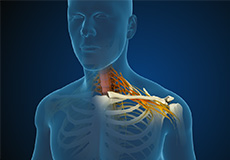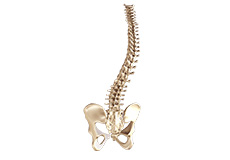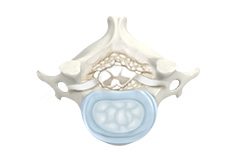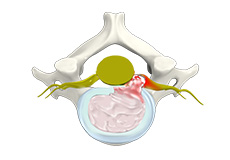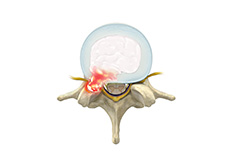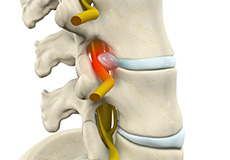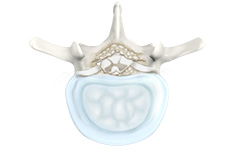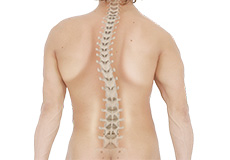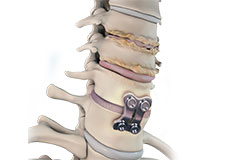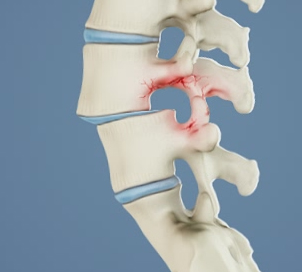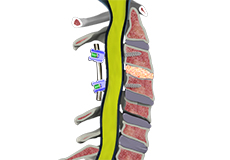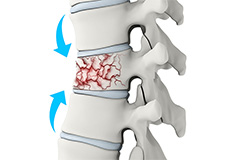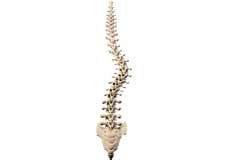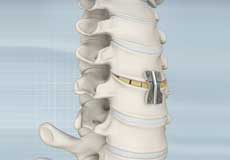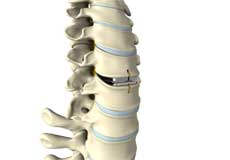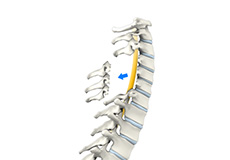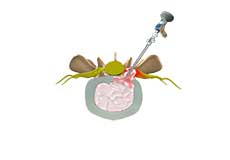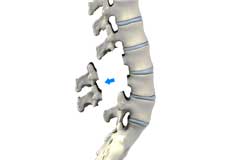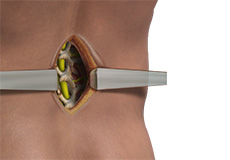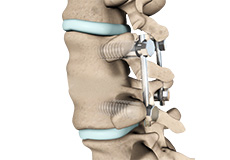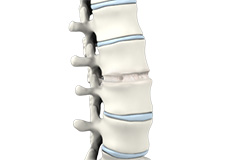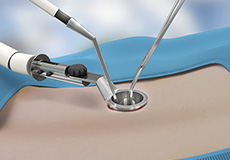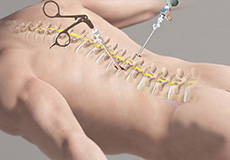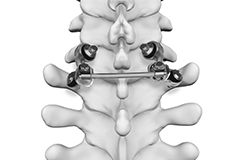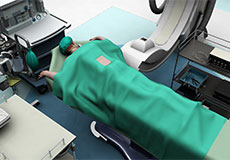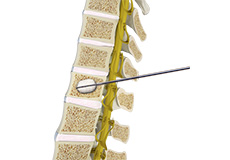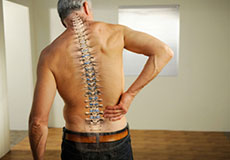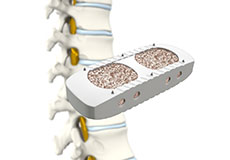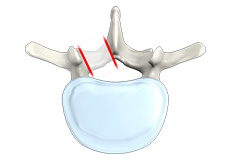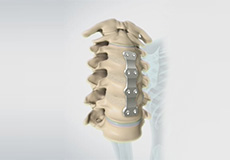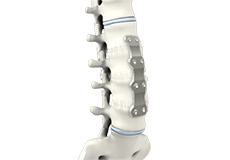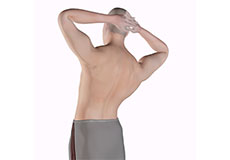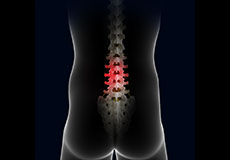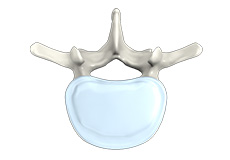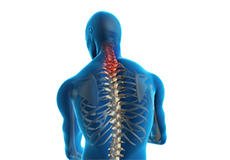Cervical
Cervical Radiculopathy/Myelopathy
Disc protrusion, also called herniated disc, is a condition caused by a tear in an intervertebral disc, allowing the disc contents to bulge out.
Cervical Deformities
The spine is made up of 33 small bones called vertebrae and is known as the spinal column or vertebral column. It can be divided into 5 parts: cervical, thoracic, lumbar, sacral, and coccyx region.
Cervical Degenerative Disorder
Cervical degenerative disc disease (DDD) is a misnomer as it is not a disease but a condition that affects the strength, resiliency and structural integrity of the intervertebral discs due to increasing age, trauma, injury, repetitive movement, improper posture, or poor body mechanics.
Cervical Disc Herniation
Cervical disc herniation can arise due to aberrations of the intervertebral disc such as bulging, rupture, and slipped or extruded disc. It results in neck, shoulder, and arm pain. In some cases, a disc herniation may occur due to injury, repetitive movements, or degenerative disc disease (DDD).
Cervical Stenosis
Coming Cervical stenosis refers to the narrowing of the spinal canal that protects the spinal cord and its branching nerves.
Lumbar
Lumbar Disc Herniation
Lumbar disc herniation is the most common cause of lower back pain and leg pain (sciatica). Aging, injury or trauma may cause the annulus fibrosus to tear, resulting in protrusion of the nucleus pulposus. This may compress the spinal nerves and/or spinal canal.
Lumbar Stenosis
Lumbar stenosis is the compression of spinal nerves caused by the narrowing of the spinal canal. It is one of the common causes of lower back pain. Spinal stenosis can also affect the spine in the neck region.
Lumbar Spondylolisthesis
Spondylolisthesis is the displacement of the vertebral disc from the spinal column. Outward (forward) displacement is termed as anterolisthesis and inward (backward) displacement is termed as retrolisthesis. This condition is often preceded by spondylolysis, a degenerative condition of the vertebra.
Lumbar Radiculopathy
Back pain is a common condition affecting approximately 80% of the population at some point in their lives. The area usually affected is the lower back (lumbar region) as it bears most of the upper body’s weight. Trauma to the spine, age and overuse can result in deterioration of the vertebral bones and joints or bulging of the discs.
General
Degenerative Spinal Conditions
A degenerative condition is a continuous deterioration of a tissue or an organ in your body over time.
Kyphosis
Kyphosis is a condition of abnormal curvature of the spine that causes rounding of the upper back or a hunchback. The thoracic portion of the spine normally has a C-shaped curve, but excessive forward curve in the spine leads to kyphosis. Kyphosis most commonly affects the thoracic spine, but can involve the cervical and lumbar portions too.
Adjacent Segment Disc Disease
Spinal fusion surgery involves the fusion of two or more vertebral bones and is a standard of care for spinal deformities and conditions such as radiculopathy, myelopathy, and spondylolisthesis.
Neck Pain
The neck supports and assists in movement of the head. It is the most flexible part of the spine and consists of 7 cervical vertebrae, the cervical segment of the spinal cord, spinal nerves, ligaments, tendons, and muscles. Neck pain can be secondary to a problem affecting any of these structures due to injury, trauma, or wear and tear.
Back Pain
The neck supports and assists in movement of the head. It is the most flexible part of the spine and consists of 7 cervical vertebrae, the cervical segment of the spinal cord, spinal nerves, ligaments, tendons, and muscles. Neck pain can be secondary to a problem affecting any of these structures due to injury, trauma, or wear and tear.
Isthmic spondylolisthesis
Isthmic spondylolisthesis is a spinal disorder in which one vertebra glides forward over the vertebra below. It usually affects the lumbar (lower back) spine, more frequently at L5-S1 levels (the fifth lumbar vertebra and first sacral vertebra).
Pseudarthrosis/Nonunion
Pseudarthrosis is an unhealed broken bone, also known as nonunion. Usually, damaged or broken bones heal over time by forming new bone tissue connecting the damaged pieces of the bone. However, if the damaged bone fails to heal then it is called ‘nonunion’ or ‘pseudarthrosis’.
Spinal Compression Fractures
A compression fracture of the vertebra occurs when the bones of the spine (vertebrae) collapse. Most commonly, these fractures occur in the thoracic or the middle portion of the spine.
Spine Deformities
The spine or backbone provides stability to the upper part of our body. It helps to hold the body upright. It consists of a series of irregularly-shaped bones appearing in a straight line. The spine has two gentle curves, when viewed from the side and appears to be straight when viewed from the front.
Sciatica
Sciatica is a painful condition caused by the irritation of the sciatic nerve. Sciatica can be acute (short term), lasting for a few weeks or chronic (long term), persisting for more than 3 months. It is important to understand that in most cases, sciatica will resolve itself within a few weeks or months and rarely causes permanent nerve damage.
Adult Degenerative Scoliosis
Adult degenerative scoliosis is characterized by side to side or lateral bending of the spine in adults. Degenerative scoliosis can involve either the mid-back and/or lower back region of the spine.
Low Back Pain
Low back pain is often a common symptom of many disease conditions and the back pain may range from simple or dull pain to sudden and sharp pain. If the pain persists for a few days, it is acute pain whereas if it continues for more than 3 months, it is considered as chronic pain.
Cervical
Anterior Cervical Discectomy with Fusion
Anterior cervical discectomy with fusion is an operative procedure to relieve compression or pressure on nerve roots and/or the spinal cord due to a herniated disc or bone spur in the neck. The vertebra is approached from the from (anterior) of your neck.
Cervical Arthroplasty
Arthroplasty is a surgical procedure to restore joint function by replacing a damaged joint with an artificial joint called a prosthesis.
Posterior Cervical Laminectomy and Fusion
Posterior cervical laminectomy and fusion is a surgical procedure performed through the back of the neck to relieve pressure over compressed nerves in the cervical spine region caused by inflamed spinal tissue or nerves.
Cervical Laminoplasty
A cervical laminoplasty is an operative procedure that involves reshaping/repositioning the bone at the neck region (cervical spine) to relieve excess pressure on the spinal nerves. It can also be performed to relieve the symptoms of the narrowed spinal canal known as spinal stenosis.
Lumbar
Lumbar Microdiscectomy
Microdiscectomy is a surgical procedure employed to relieve the pressure over the spinal cord and/or nerve roots, caused by a ruptured (herniated) intervertebral disc. A herniated disc, common in the lower back (lumbar spine) occurs when the inner gelatinous substance of the disc escapes through a tear in the outer, fibrous ring (annulus fibrosis).
Lumbar Laminectomy
Lumbar laminectomy is a spinal surgery to relieve excess pressure on the spinal cord or nerves within the spinal canal in the lumbar or lower back region. The pressure may be caused by bony overgrowths, herniated discs, injury, tumors, or narrowing of the spinal canal resulting in painful symptoms affecting a person’s ability to perform normal day to day activities.
Transforaminal Lumbar Interbody Fusion (TLIF)
Transforaminal lumbar interbody fusion (TLIF) is a type of spinal fusion procedure in which bone graft is placed between the affected vertebrae in the lower back (lumbar) region through an incision on the patient’s back.
Oblique Lumbar Interbody Fusion (OLIF)
Lumbar interbody fusion can be performed through different approaches. Oblique lumbar interbody fusion (OLIF) is a minimally invasive approach to LIF, where an incision is made on your side to avoid damaging important muscles and ligaments in your back.
Anterior Lumbar Interbody Fusion
Anterior lumbar interbody fusion (ALIF) is a surgery performed to correct spinal problems in the lower back. The surgery can be implemented either as an open surgery or minimally invasive technique.
Outpatient Spine Surgery
Outpatient spine surgery is an operative procedure that does not require an overnight stay at the hospital. It is also called ambulatory or same-day surgery.
General
Motion Preservation Spine Surgery
Motion preservation surgery is a relatively new type of spine surgery that may be performed on select patients as an alternative to traditional spinal fusion surgery. While traditional fusion surgery has been an effective option to reduce pain and treat certain spinal conditions, it can affect the natural movement of the spine and prevent you from performing certain activities.
Revision Spinal Surgery
Revision spine surgery is surgery performed in certain patients to correct the problems of earlier spine surgery.
Kyphoplasty
Balloon kyphoplasty is a spine surgery that relieves back pain caused by a vertebral compression fracture. The aim of balloon kyphoplasty is to relieve pain, stabilize the fracture and restore the vertebral body height.
How to prevent Back Pain
Back pain is common and usually affects everyone at some point. It often occurs more frequently as you grow older. Pain can either be sharp and sudden or dull and constant. Acute back pain lasts a few days or weeks while pain that lasts more than 6 months is considered chronic.
XLIF - Extreme Lateral Interbody Fusion
Extreme lateral interbody fusion (XLIF) is a minimally-invasive surgery that involves the fusing of two degenerative spinal vertebrae. The procedure is conducted to relieve painful motion in the back caused by spinal disorders.
Posterior Cervical Foraminotomy
Posterior cervical foraminotomy is a surgical procedure performed through the back of the neck to relieve symptoms of a pinched or compressed spinal nerve by enlarging the neural foramen, an opening for the nerve roots to exit the spine and travel through the body, and creating more space for the spinal nerve to pass through.
Anterior Cervical Corpectomy and Fusion
An anterior cervical corpectomy and fusion is an operative procedure to relieve pressure on the spinal cord and spinal nerves by removing the vertebral bone and intervertebral disc material (decompression) in the cervical spine or neck.
Minimally Invasive TLIF
Transforaminal lumbar interbody fusion (TLIF) is a minimally invasive fusion of the vertebrae of the lumbar region (lower back). It is designed to provide stability to the spine and treat back and leg pain.
Anterior Lumbar Corpectomy and Fusion
Anterior Lumbar Corpectomy and Fusion is a surgical technique performed to remove the vertebral bone or disc material between the vertebrae to alleviate pressure on the spinal cord and spinal nerves (decompression) in the lumbar (lower back) region.
Preventing Back Pain at Home and Work
The back is subject to wear and tear from daily activities and stresses. Pain may vary in severity and duration. Although the natural degenerative processes that take place with aging cannot be avoided, precautions can be taken at home and your workplace to minimize its impact.
Am I a Candidate for Spine Surgery?
Spinal issues manifest in a large number of people at all phases of life. Back pain is one of the most common complaints that individuals visit a doctor for. Many orthopedic issues such as arthritis and other joint problems are manifested in the spine.
Back Pain Exercises
Strenuous activities of daily living can stress the back resulting in pain. It is natural at this time to withdraw from activity and rest, but is not helpful in the long run and may actually slow down the healing process.
Complications of Spinal Surgery
The most serious complication of a herniated disc that may occur before surgery is the development of the cauda equine syndrome. It occurs when a large particle of disc material ruptures in the spinal canal. It occurs in the area where the nerves that control the bowels and bladder travel before they leave the spine.
Recovery and Post-op Instructions after Spine Surgery
The duration of hospitalization depends on the treatment rendered. The period of your rest or inactivity depends on a few factors such as the type of surgical procedure and the approach used to access your hip, the size of the incision and presence of any complications.
Healthy Back Tips
Back and neck pain is the most common health problems experienced by most people, at some point in their lives. People with back pain or neck pain may have trouble performing daily routine activities.
Lumbar Spine Anatomy
The spine also called the back bone, plays a vital role in stability, smooth movement and protection of the delicate spinal cord. It is made up of bony segments called vertebra with fibrous tissue called intervertebral discs between them. The vertebra and discs form the spinal column from the head to the pelvis, giving symmetry and support to the body.
Cervical Spine Anatomy
The spine, also called the backbone, plays a vital role in stability, smooth movement and protection of the delicate spinal cord. It is made up of bony segments called vertebrae with fibrous tissue called intervertebral discs between them. The vertebrae and discs form the spinal column from the neck to the pelvis, giving symmetry and support to the body.


